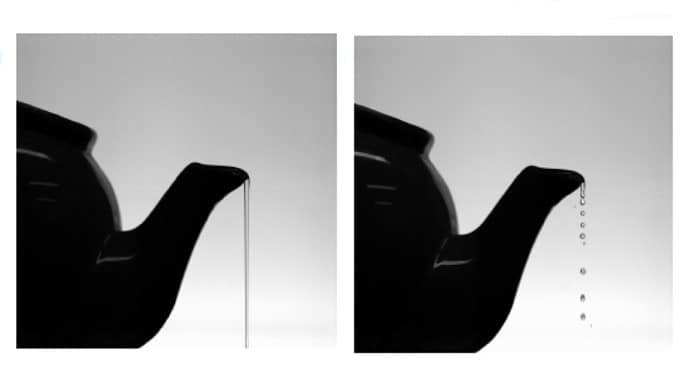
Cast your mind back to 2009 and you might remember how physicists in France devised a way to end the trauma of tea dribbling down the underside of the spout of a teapot when you are pouring a brew. They found that the surface of the spout affects the flow of the liquid and that the best option to create dribble-free pouring is to give the spout a thin layer of a “super-hydrophobic” coating – a material that strongly repels water.
Now researchers in Austria and the UK say they have formulated a “complete theory” of the dribbling teapot effect – one that considers the inertia, viscous and capillary forces at play when a drop forms at the edge of the teapot spout that then wets the underside of it. By carrying out experiments – presumably involving lots of tea drinking — they confirmed their theoretical analysis, finding that the liquid trickles down the underside of the teapot spout when poured slowly but not when poured at a faster rate. The end of tea-stained tablecloths may be in sight. If you’re fast enough, that is.
In some locations, the build up of dust and biological materials can seriously degrade the efficiency of solar panels. Now, researchers at the São Paulo Research Foundation in Brazil have discovered that some microorganisms are well adapted to thrive in the harsh conditions found on the surface of solar panels. What is more, they say that these tough life forms could be used in a wide range of applications including sunscreens and pigments for textiles. Indeed, they believe that the resilient organisms could even be co-opted to help keep solar panels clean.
Astonishingly, the team found very similar microbiota on panels in locations as disparate as Brazil, California, Spain, the Arctic and Antarctic. About 90% of the organisms belong to two genera of bacteria. More recently they have identified a yeast that is present on panels in cooler climes. This organism has tensoactive properties – which means that it reduces the surface tension of water. This, say the researchers, could make the yeast useful for creating new detergents and antimicrobial agents.
